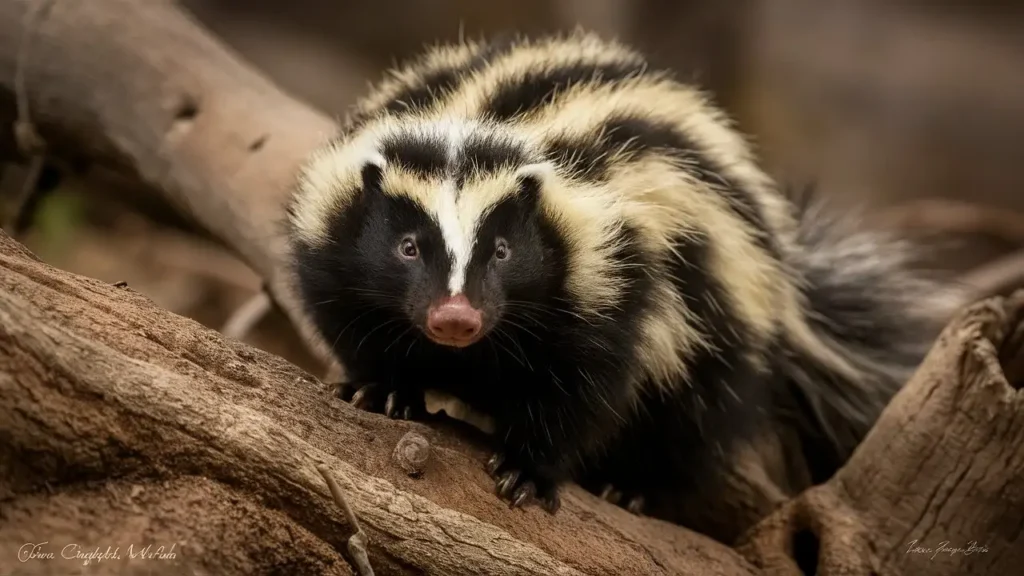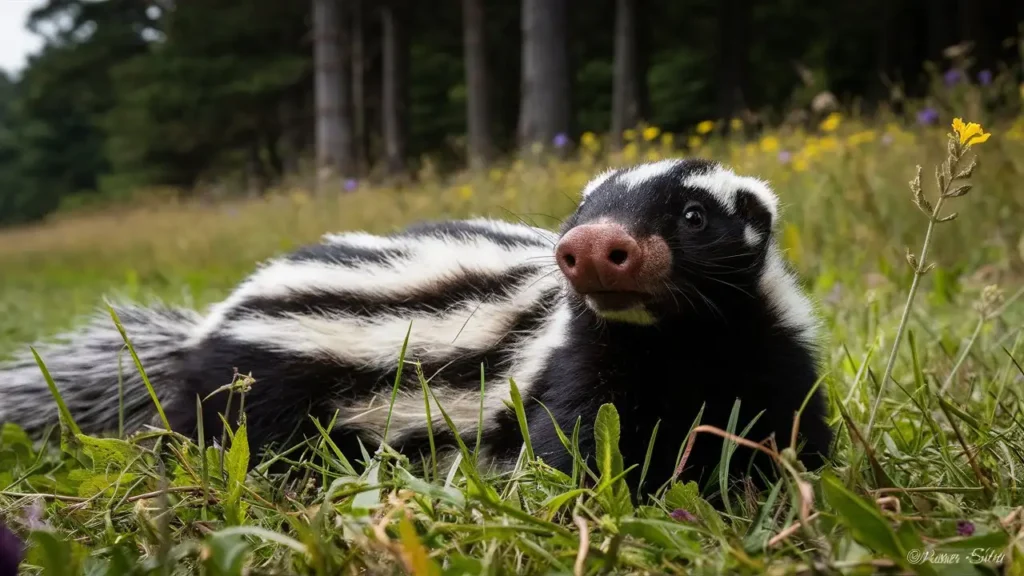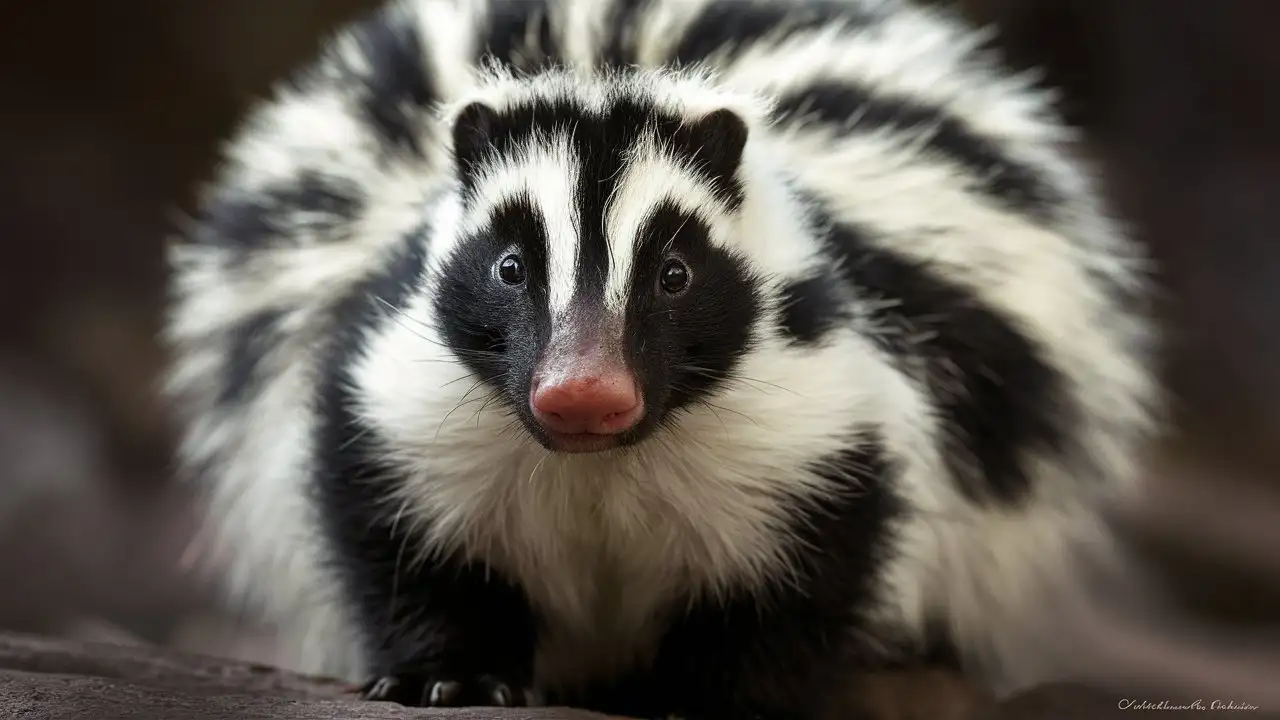Striped Hog-Nosed Skunk Life Style
The striped hog-nosed skunk (Conepatus semistriatus) is a fascinating creature that combines distinctive physical features with unique behaviors. Known for its powerful sense of smell and bold stripes, this nocturnal mammal thrives in various environments across the Americas. In this article, we’ll explore its origins, lifestyle, defense mechanisms, and the important role it plays in maintaining ecological balance.
Origins and Habitat
Evolutionary Roots
The striped hog-nosed skunk belongs to the family Mephitidae, which includes all skunks and stink badgers. Fossil evidence reveals that the ancestors of skunks evolved millions of years ago, developing unique adaptations such as elongated noses for digging and powerful scent glands for defense.
Geographical Distribution
These skunks are native to the Americas, with a range extending from Mexico to Central America, including Costa Rica and Honduras. They inhabit diverse landscapes, from tropical forests to grasslands and mountainous regions.
Preferred Habitat
Striped hog-nosed skunks thrive in areas with:
- Dense vegetation: Provides cover from predators.
- Abundant food: Insects, fruits, and small vertebrates.
- Proximity to water sources: Supports their foraging needs.
Physical Characteristics
Signature Stripes and Coloration
The striped hog-nosed skunk is easily recognized by its bold white stripes that run from its neck to its tail, contrasting sharply against jet-black fur. This coloration serves as a visual warning to potential predators, signaling its ability to spray a potent defensive liquid.
Anatomical Adaptations
Every part of this skunk’s body is designed for survival:
| Feature | Function |
|---|---|
| Elongated Nose | Acts as a built-in shovel for rooting. |
| Long Claws | Ideal for digging up insects and prey. |
| Scent Glands | Produce a powerful spray for defense. |
| Sharp Teeth | Help break down tough prey like insects. |
Their compact size, measuring up to 20 inches long and weighing 4–6 pounds, makes them agile and stealthy in their environment.

Lifestyle and Behavior
Nocturnal Habits
Striped hog-nosed skunks are primarily nocturnal, coming out at night to forage and explore.
- Foraging: They use their keen sense of smell and strong claws to dig for food.
- Territorial Marking: Scent marking helps establish territory and communicate with other skunks.
- Resting: During the day, they retreat to burrows, tree hollows, or dense vegetation for safety.
Social Interactions
These skunks are largely solitary except during the breeding season.
- Solitary Foragers: They prefer to hunt and roam alone.
- Breeding Behavior: Males travel long distances during the mating season to find receptive females.
Diet and Foraging
Striped hog-nosed skunks are omnivores with a highly adaptable diet, allowing them to thrive in various ecosystems.
Diet Composition
Their diet includes:
- Insects: Beetles, wasps, and larvae.
- Fruits and Nuts: Bananas, berries, and seeds.
- Small Vertebrates: Frogs, reptiles, and nesting birds.
- Carrion and Plant Material: Scavenged food supplements their diet.
Foraging Techniques
- Digging: Long claws help them unearth grubs and insects.
- Rooting: Their snout acts like a plow to uncover buried food.
- Stealth: They quietly stalk small prey, relying on surprise.
Defense Mechanisms
The striped hog-nosed skunk has a reputation for its remarkable ability to fend off predators using both physical and chemical defenses.
Chemical Arsenal
Like other skunks, they possess scent glands that produce a sulfur-based spray.
- Range: Can spray accurately up to 10 feet.
- Effect: Causes irritation, temporary blindness, and a lingering odor that deters predators.
Behavioral Strategies
Feigning Death: In rare cases, they may play dead to avoid conflict.
Warning Displays: They stomp their feet, raise their tails, and arch their backs to intimidate threats.
Retreat: When possible, they prefer to escape rather than confront.

Reproduction and Life Cycle
Striped hog-nosed skunks follow a structured reproductive cycle that ensures the survival of their species.
Breeding Season
- Timing: Breeding occurs in late winter or early spring.
- Courtship: Males use scent marking and vocalizations to attract females.
- Competition: Dominant males are more likely to mate.
Development of Young
- Gestation: Lasts around 60–77 days.
- Litter Size: Females give birth to 2–5 kits.
- Weaning: Kits are weaned after about two months.
- Independence: By one year, young skunks establish their own territories.
Ecological Role
Striped hog-nosed skunks contribute significantly to the ecosystems they inhabit.
Pest Control
By consuming insects and small rodents, they help regulate pest populations.
Seed Dispersal
Fruits in their diet result in seed dispersal, aiding plant regeneration.
Soil Aeration
Their digging behavior improves soil quality, promoting healthy plant growth.
Conservation Challenges
Despite their ecological importance, striped hog-nosed skunks face several threats.
Environmental Threats
- Habitat Loss: Deforestation and agricultural expansion reduce their living spaces.
- Human Conflict: Encounters with humans often lead to skunks being killed or relocated.
- Climate Change: Alters the availability of food and suitable habitats.
Conservation Efforts
- Protected Areas: Establishing reserves helps safeguard their habitats.
- Awareness Campaigns: Educating locals about the skunk’s ecological role can reduce human-wildlife conflicts.
- Research: Ongoing studies provide valuable insights into their behavior and population dynamics.
Fun Facts About the Striped Hog-Nosed Skunk
- Built-in Shovel: Their elongated snouts are perfectly designed for digging.
- Omnivorous Diet: They consume a diverse range of foods, from beetles to berries.
- Nighttime Ninjas: Their nocturnal habits and stealthy movements help them avoid predators.
- Powerful Spray: A single spray can deter even the most persistent threats.
FAQs
What Does a Striped Hog-Nosed Skunk Eat?
They are omnivores, eating insects, fruits, nuts, small vertebrates, and occasionally carrion.
How Do Striped Hog-Nosed Skunks Defend Themselves?
They use a sulfur-based spray from their scent glands and engage in intimidating warning behaviors.
Where Can You Find Striped Hog-Nosed Skunks?
These skunks are found in Central and South America, from Mexico to Honduras, thriving in forests, grasslands, and brush areas.
Conclusion
The striped hog-nosed skunk is a remarkable species, blending unique physical traits with critical ecological roles. From pest control to soil aeration, their presence enriches the environments they inhabit. Protecting these nocturnal creatures is essential for maintaining biodiversity and ecological balance. By learning more about their habits and habitats, we can appreciate their importance and contribute to their conservation.

